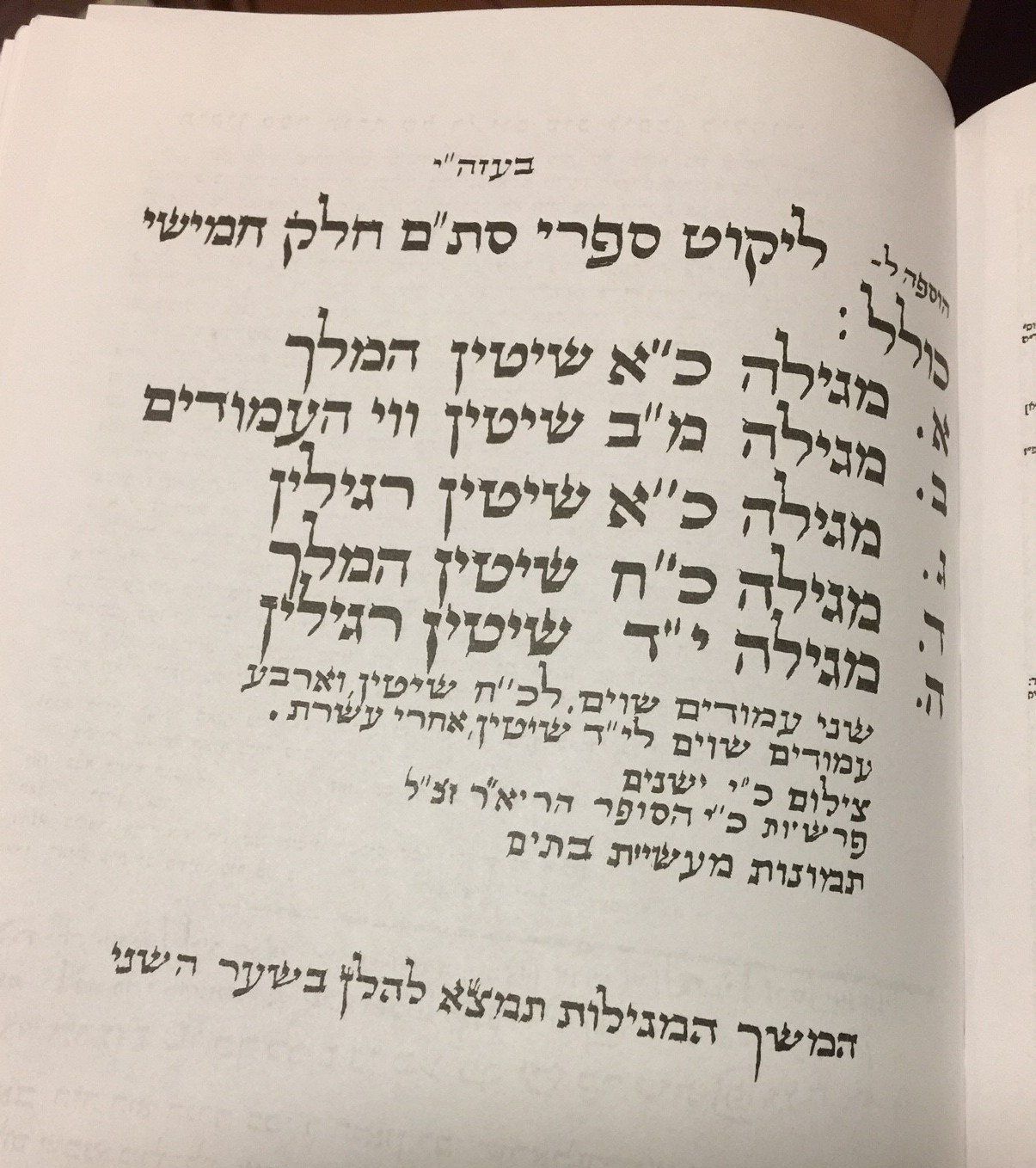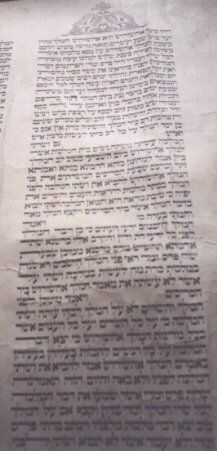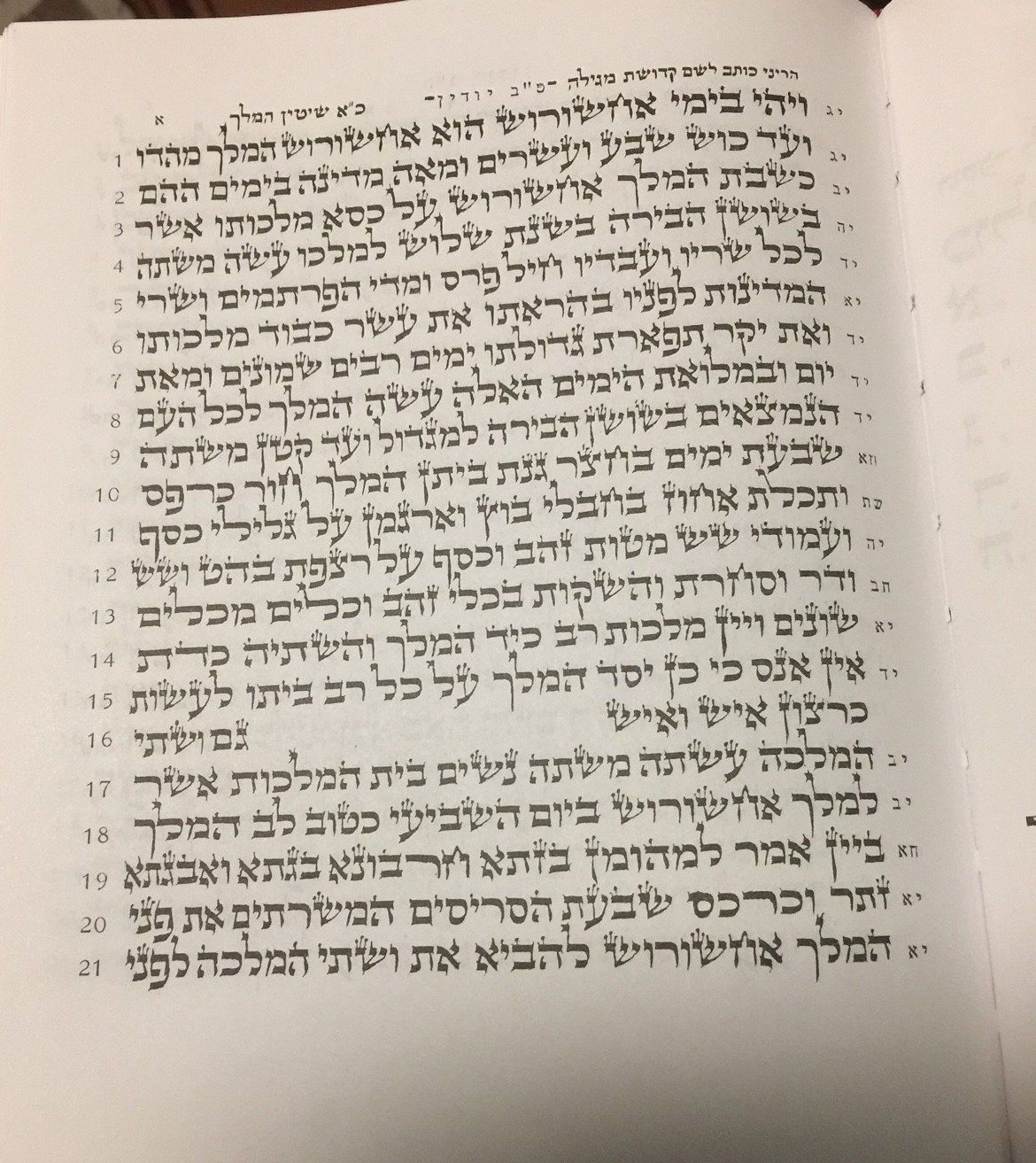M'gillat Esther
(the book of Esther) doesn’t contain the name of God. Many rabbis have pondered His absence, but for a trainee sofer, this represents a perfect opportunity for practice, assuming, of course I could find anyone who wanted a m'gillah. Long gone are the days when people would have their own private scrolls, but Synagogues do need one for the public reading on Purim
which must be done from a kosher scroll. My synagogue at the time had one - so no joy there. However Harlow Reform Synagogue, a small but very friendly congregation where I used to take the occasional service didn’t, so I offered my services and the ‘man from Harlow, he say yes!’
Ah, but a m'gillah
is 10 chapters long, (not the mere two paragraphs of a m'zuzah), and it is written to same plethora of rules as a Sefer Torah. This called for some serious study. First of all, I had to find a tikkun
(guide) to copy from. This wasn’t all that easy as not all m'gillot
are the same. Some have 11, 22, 28 or 42 lines and a decision had to made as to which I wanted to do. Having decided on 28 lines, this meant that my m'gillah
would be some 16 amudim
(columns) long covering 4 y'riot
(sheets).
Vivian quite rightly pointed out that I wasn’t ready and had much to learn in my handling of a quill and letter shapes and so practice became the order of the day, using a quill on paper with non-kosher ink for each column, hoping that each one would improve gradually.
Below: A page from atikkunshowing some of the the variants available, 21 lines, each column starting with the word hamelech (the king), 42 lines starting with the letter vav, 21 lines regular etc.Photo © Mordechai Pinchas. As it happens I quite like 28 line ones.
After 10 practice amudim, each one dutifully sent to Vivian for checking and comment, he agreed I was ready for the real thing - the ganze m'gillah
in the truest sense of the phrase!
However, I hadn’t ever seen the real thing up close other than from afar when our Rabbi on the bimah
(platform) would roll from sheet to sheet. Indeed I had probably been too busy booing and hissing Haman from a very early age to even notice. My mission then became twofold:
1) get to examine a m'gillah
close up and personal
2) buy the materials
Number 2 came first and in doing number 2, number 1 just happened.
Vivian very kindly organised a trip to meet a sofer
from whom I could purchase the k’laf
(parchment), d'yo
(ink) and extra quills. It would be a very special day that really marked my entry into the real world of sofrut. The scribe, worked in a small box room up some five flights of narrow stairs on top of a synagogue. When we entered, he was sitting hunched over a lightbox writing t'fillin. Wearing the full black garb of the Chassid, he was every inch what you expect a sofer
to look like. I'm perhaps a bit more colourful. We remained quiet whilst he completed the line. (The halachah
states that if you were writing the name of God, even if a King of Israel bid you good-day you don’t answer him - though you do answer a non-Jewish king as he could have you killed. A King of Israel should know better than to interrupt a scribe at work).
Vivian showed him some of my work and he showed me the m'gillah
that he was currently working on - a truly beautiful script. I then explained about my commission from Harlow. A true salesman, The scribe proceeded to ask why I was going to do it, and why not buy one instead. He proceeded to show me about five different m'gillot
of varying quality and in different hands.




